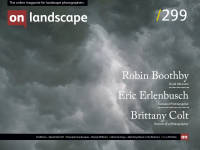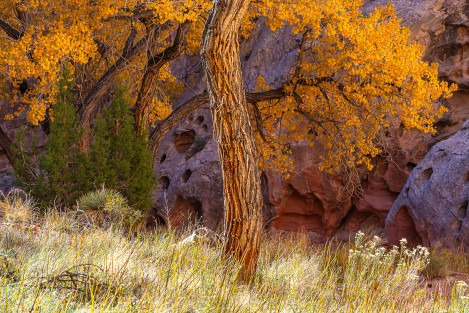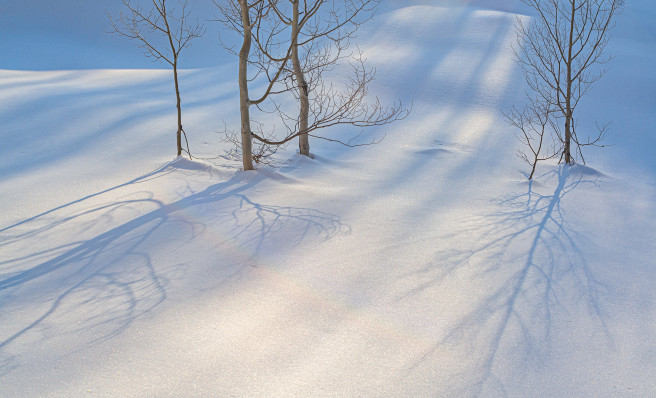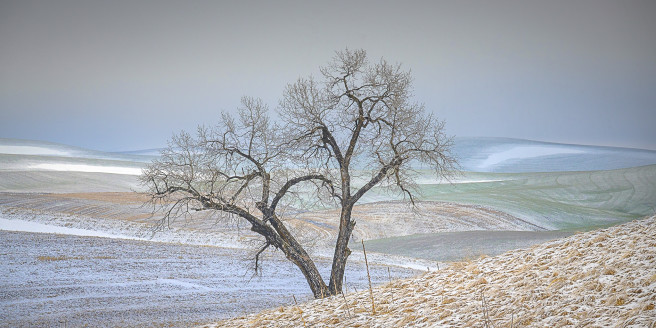Featured Photographer

Eric Erlenbusch
Eric Erlenbusch uses photography to express his creative voice through nature and helps others in finding their own unique voice.

Michéla Griffith
In 2012 I paused by my local river and everything changed. I’ve moved away from what many expect photographs to be: my images deconstruct the literal and reimagine the subjective, reflecting the curiosity that water has inspired in my practice. Water has been my conduit: it has sharpened my vision, given me permission to experiment and continues to introduce me to new ways of seeing.
In this issue, we have a conversation with Eric Erlenbusch, who has realised a long-standing desire to both see and share where he lives, which began at an early age with time spent outdoors. Only later did a camera begin to help him realise his ambition and ultimately prompt him to flip the needle between interest and career. He has long had an ambition to do more than simply record what nature looks like: visual storytelling and passion are essential. We talk about the role of the camera in noticing and engaging with viewers and the different ways of sharing photography that he is exploring.
Would you like to start by telling readers a little about yourself – where you grew up, what your early interests were, and what you went on to do?
Firstly, I’d like to thank On Landscape for the opportunity to share my journey with photography. I grew up in Missoula, MT, which is between Glacier National Park and Yellowstone. My family wasn’t particularly outdoorsy, but I was always athletic through sports. In my teens, I joined my family during hunting season for outings into the woods and a few random camping trips. Around the age of 15, I vividly remember a day I believe my love of Nature began; I felt bored one Saturday morning, so I randomly took my parents’ mountain bike and rode a local trail which ended at the Wilderness boundary. Since that day in Nature, I haven’t felt boredom in my life again.
During high school, I had a friend who shared some interest in being outdoors, and while only both being 16 years old, we headed into the nearby mountains for an overnight winter camping trip. Looking back it sounds bizarre that our parents allowed us to do this; I have fond memories from that trip and our subsequent adventures, as he unfortunately passed away a few years later in an avalanche accident. I continued to explore the Bitterroot Mountains and the surrounding mountains of Montana, as much as possible on weekends and during the summer. I purchased a USFS map for $5.00 and began exploring, wondering where each trail went and what it looked like, often solo with my dog or with a friend. This same friend and I bought a snowmobile in high school and used that to further explore and ski in Winter. Looking back, I really just wanted to see where I lived and share it.
I met a friend shortly after who also enjoyed climbing and we began to climb mountains, from Granite Peak in MT (highest point) to failed attempts in Glacier NP to summiting Mt. Rainier out of Seattle. Through all these adventures, I often took a 35mm point and shoot, and stuffed it with Kodak Gold as a way to share snaps of these adventures. This was the extent of photography for me at the age of 20; my interest was solely in Nature and adventure. I moved to Utah to attend the U of U and continue my studies in Meteorology; I’m a self-proclaimed weather nerd and thought this was my career path. I worked and skied at Alta/Snowbird through school and quickly met even more adventurous, like-minded friends. Through adventures in nature, I began noticing there were more and more moments which stood out for me to want to share.
How did photography come into your life, and what were your early images of or about?
In 2005, I broke my leg skiing and later that year I moved to Seattle, WA, with my partner at the time. She had an older SLR with a “real” lens and I recall feeling as if I could see for the first time upon using it. I decided I wanted to teach myself photography and began using Velvia 50 and spot metering through the camera to learn light. Weekend adventures to the Olympic Peninsula and the Cascade Mountains gave ample opportunity to shoot and learn. I also spent countless days at my favourite place in Seattle, the Ballard Locks. I was hungry to learn, shoot, evaluate and repeat. Photography was very much a slow learning process and was always in the background for me at this time.
It was in Seattle that I began a career in Hospitality Management for a global company, which then allowed me to move to Park City, UT. I liked my job, connecting with people and living where nature was literally at my doorstep.




